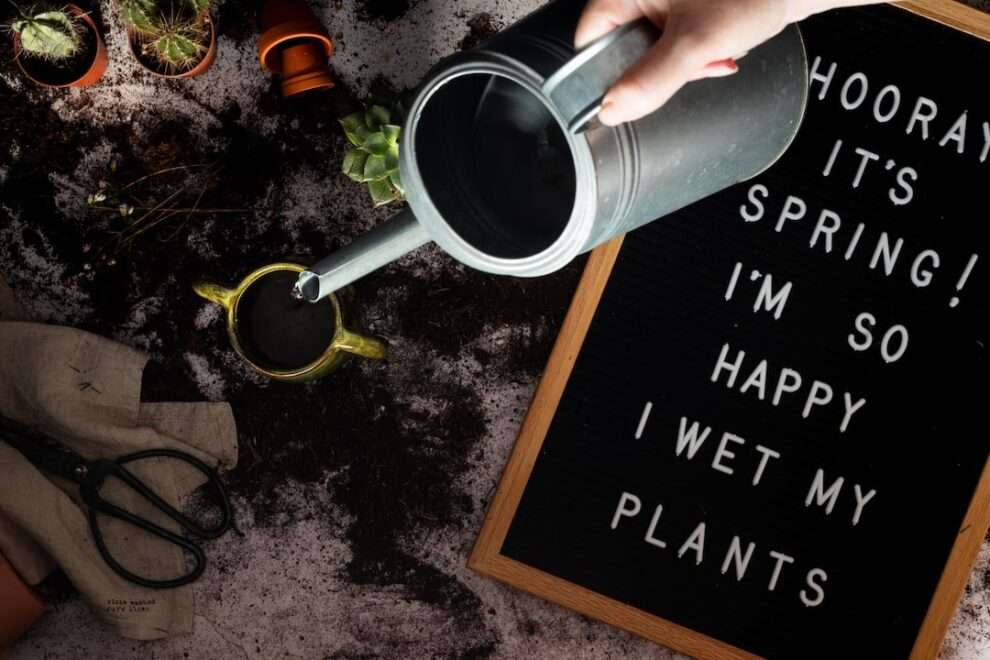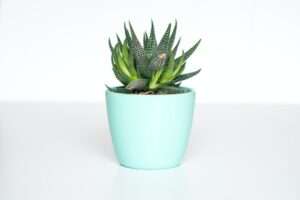Proper watering is crucial for the health and survival of succulents. Succulents are plants that have adapted to survive in arid environments by storing water in their leaves, stems, and roots. This unique adaptation allows them to withstand long periods of drought, but it also means that they have specific watering needs. Understanding these needs and providing the right amount of water is essential for keeping your succulents thriving.
Understanding the Water Needs of Succulents
Succulents have evolved to store water in their fleshy leaves, stems, and roots. This adaptation allows them to survive in dry conditions where water is scarce. The water stored in their tissues acts as a reservoir that they can draw from during periods of drought. However, this also means that they are susceptible to overwatering.
Because succulents store water in their tissues, they have different watering needs compared to other types of plants. They are adapted to survive in dry conditions and can tolerate periods of drought. Overwatering can lead to root rot and other issues, so it’s important to understand how much water your succulents need and when to water them.
Factors Affecting Succulent Watering Frequency
Several factors can affect the watering frequency of succulents. Environmental factors such as temperature and humidity play a significant role in determining how often you should water your succulents. In hot and dry climates, succulents may need more frequent watering compared to cooler and more humid environments.
The size and age of the plant also influence its watering needs. Young succulents have smaller root systems and may require more frequent watering compared to mature plants with well-established roots. Additionally, the type of soil and container used can affect how quickly the soil dries out and how often you need to water your succulents.
The Importance of Proper Drainage for Succulents
Proper drainage is crucial for succulents because they are prone to root rot if their roots sit in water for too long. Succulents need well-draining soil that allows excess water to flow out of the container or drain away from the roots in the ground. Without proper drainage, the soil can become waterlogged, leading to root rot and other issues.
To ensure proper drainage, it’s important to choose a container with drainage holes and use a well-draining soil mix. The soil should be loose and porous, allowing water to flow through easily. Adding materials such as perlite or pumice to the soil mix can improve drainage and prevent water from pooling around the roots.
Choosing the Right Soil for Your Succulents
Choosing the right soil is essential for the health of your succulents. Succulents thrive in well-draining soil that allows excess water to flow out quickly. The ideal soil mix for succulents is a combination of organic matter and inorganic materials such as sand, perlite, or pumice.
Commercial succulent soil mixes are readily available and can be a convenient option. These mixes are specifically formulated to provide the right balance of moisture retention and drainage for succulents. However, you can also create your own succulent soil mix by combining equal parts of potting soil, perlite, and coarse sand.
Watering Techniques for Succulents in Containers

When watering succulents in containers, it’s important to follow a few key techniques to ensure their health and prevent overwatering. One common mistake is watering too frequently. Succulents prefer to dry out between waterings, so it’s important to allow the soil to dry completely before watering again.
When watering, thoroughly saturate the soil until water drains out of the bottom of the container. This ensures that the entire root system receives moisture. Avoid misting or lightly spraying the leaves, as this can lead to fungal diseases. Instead, focus on watering the soil directly.
How to Water Succulents in the Ground
Watering succulents planted in the ground follows similar principles to watering those in containers. However, there are a few additional considerations. In-ground succulents may have access to natural rainfall, so it’s important to adjust your watering frequency accordingly.
When watering succulents in the ground, it’s important to water deeply and infrequently. This encourages the roots to grow deeper and helps the plant become more drought-tolerant. Watering deeply also ensures that the water reaches the entire root system.
Signs of Overwatering and Underwatering in Succulents
Overwatering and underwatering are common issues that can affect the health of succulents. It’s important to be able to recognize the signs of these problems so you can address them promptly.
Signs of overwatering include yellowing or mushy leaves, blackened or rotting roots, and a foul smell coming from the soil. The leaves may also appear swollen or translucent. On the other hand, signs of underwatering include shriveled or wrinkled leaves, dry and brittle stems, and slow growth.
How to Revive Overwatered or Dehydrated Succulents
If you notice signs of overwatering or dehydration in your succulents, there are steps you can take to revive them. For overwatered succulents, it’s important to remove them from their container and inspect the roots for rot. Trim away any blackened or mushy roots and allow the plant to dry out completely before replanting in fresh soil.
For dehydrated succulents, soak the entire plant in water for a few hours until the soil is thoroughly moistened. Allow any excess water to drain away before returning the plant to its container. It’s important to gradually increase watering frequency to prevent overwatering.
Tips for Watering Succulents During Different Seasons
Watering frequency may need to be adjusted during different seasons to accommodate changes in temperature and humidity. In general, succulents require less water during the winter months when they are in a period of dormancy. During this time, it’s important to reduce watering frequency and allow the soil to dry out more between waterings.
In the spring and summer months, when succulents are actively growing, they may require more frequent watering. However, it’s still important to allow the soil to dry out between waterings to prevent overwatering. Monitor the moisture level of the soil and adjust your watering schedule accordingly.
Balancing Watering with Other Succulent Care Practices
Watering is just one aspect of caring for succulents. It’s important to balance watering with other practices such as fertilizing and pruning to ensure the overall health of your plants.
When fertilizing succulents, it’s important to use a diluted fertilizer specifically formulated for succulents. Apply the fertilizer sparingly, as succulents are not heavy feeders. Overfertilizing can lead to excessive growth and weak plants.
Pruning is another important practice for maintaining the shape and health of your succulents. Remove any dead or damaged leaves or stems using clean, sharp scissors or pruning shears. Pruning can also help promote branching and encourage a fuller, more compact growth habit.
Proper watering is essential for the health and survival of succulents. Understanding their unique water needs and providing the right amount of water is crucial for keeping them thriving. Factors such as temperature, humidity, plant size, soil type, and container choice all play a role in determining how often you should water your succulents.
By ensuring proper drainage, choosing the right soil, and following proper watering techniques, you can help your succulents thrive. It’s important to monitor your plants for signs of overwatering or dehydration and take prompt action to address these issues. By balancing watering with other care practices such as fertilizing and pruning, you can create an optimal environment for your succulents to flourish.
If you’re a succulent enthusiast looking to improve your watering routine, you may find this article on “Bringing the Outdoors In: How Indoor Succulents Can Transform Your Space” helpful. It provides valuable tips and insights on effectively watering succulents in an indoor environment. From understanding the relationship between succulents and humidity to exploring the impact of soil pH on their growth, this article covers it all. Check it out for expert advice and take your indoor succulent game to the next level.
FAQs
What are succulents?
Succulents are plants that store water in their leaves, stems, and roots. They are known for their ability to survive in arid conditions and are popular houseplants.
How often should I water my succulents?
Succulents should be watered when the soil is completely dry. This can range from once a week to once a month, depending on the environment and the type of succulent.
What is the best way to water succulents?
The best way to water succulents is to thoroughly soak the soil and then allow it to dry out completely before watering again. It is important to avoid getting water on the leaves or in the center of the plant, as this can lead to rot.
Can I use a spray bottle to water my succulents?
While a spray bottle can be used to mist succulents, it is not an effective way to water them. Succulents need to be watered deeply to encourage healthy root growth.
What type of soil is best for succulents?
Succulents require well-draining soil that allows water to flow through quickly. A mix of sand, perlite, and potting soil is a good option for succulents.
What are some signs that my succulent needs more water?
Some signs that a succulent needs more water include wilting, yellowing leaves, and dry soil. However, it is important to avoid overwatering, as this can also lead to problems such as root rot.

















Add Comment